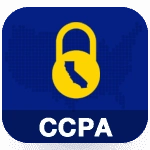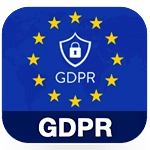The business impact of dirty data – data that is inaccurate, incomplete, and invalid is staggering, but an individual organization can avoid the morass with specific procedures.
Modern techniques like email appending can minimize the impact of dirty data on your business. An organization that employs strong data governance, in addition to data-appending practices, can generate up to 70% more revenue. Moreover, clean and reliable data makes your firm more agile and receptive while cutting down on wasted efforts by knowledge workers and data scientists.
To get you prepared on e-appending practices, we have listed some facts and features in the below Infographic. Study it before embracing this service in the business plan.

[Infographic Content]
Email appending (or e-appending) is a process of matching a customer’s data with the vendor’s database to obtain an accurate email address.
Why is it Essential?
- Increases marketing ROI
- Reduces marketing costs
- Improves productivity
- Accelerates email campaign
- Expands marketing option
- Drives repeat purchases
- Enhances I.P. sender reputation
- Establishes a strong relationship
Impact of Dirty Data – Data that is Incomplete
- 27% of revenue is wasted on incomplete or inaccurate customer data in the U.S.
- Data scientists waste 60% of their time on normalizing and organizing data.
- Knowledge workers spend 50% of their time with hidden and wrong data.
- Dirty data costs the average business 15% to 25% of revenue
- $3.1 trillion is the annual cost of poor quality data in the U.S. alone.
Flush Your Dirty Data with this Service
- 66% of companies with clean data experienced boosted revenue.
- Conversion rates are 25% higher for organizations with a clean database.
- A firm can generate up to 70% more revenue based solely on clean data.
It is a 7 Step Process
1. Upload: The client uploads the file that requires data appending services.
2. Match: Records in the client’s file are matched against the vendor’s master database.
3. Append: The respective email addresses are added to the client’s file.
4. Verify: Each appended email address is verified thoroughly
5. Opt-Out: A standard email with an opt-out option is sent to this address.
6. Eliminate: Remove the email address of all the opt-out ID’s.
7. Deliver: The database is sent to the client in the original format.
Five Best Practices to Reap Good Result
- Start with active clients with no email address
- Move slowly back through older records
- Append during your off-season
- Perform updates regularly
- Implement a phased approach
How Blue Mail Media’s Assist you the Best?
- Usage of manual and AI tools to append precise email IDs to the file.
- Provides data that are GDPR, CCPA, Can-Spam, and Anti-Spam compliant.
- Maintains quality suppression files to identify invalid email addresses.
- Utilizes double opt-in and opt-out methods to offer accurate records.
- Designed to reduce the bounce rate and increase the conversion.
- Delivers better outcomes with improved return-on-investment.
Don’t Let Dirty Data Slow You Down
Source:
Marketing Sherpa, Zoom Info, Yesmail Interactive & Gleanster Survey, SiriusDecisions, Integrate, Experian, Harvard Business Review & IBM Big Data & Analytics Hub.





